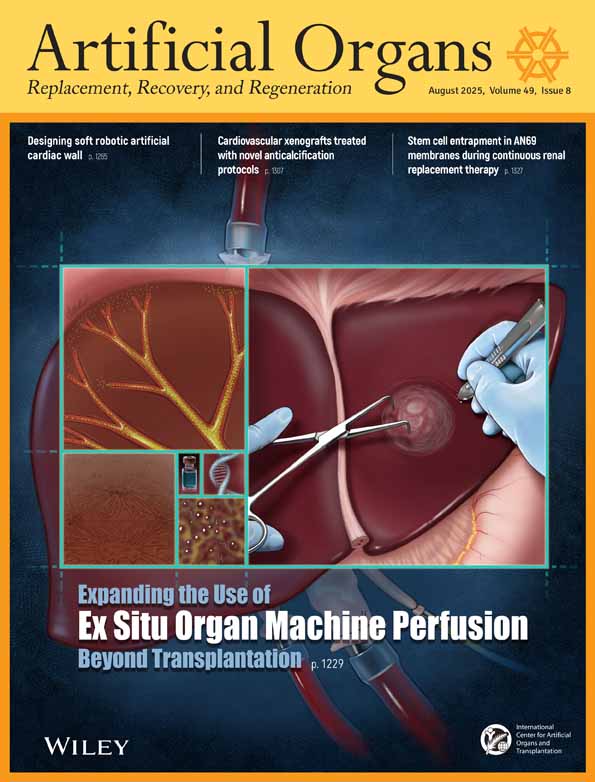Development of Totally Implantable Electromechanical Artificial Heart Systems: Baylor Ventricular Assist System
This work was presented in part at the VIIIth World Congress of the International Society for Artificial Organs, held August 19–23, 1991, Montreal, Canada.
Abstract
Abstract: An implantable electromechanical ventricular assist system (VAS) intended for permanent use has been developed. It consists of a conically shaped pumping chamber, a polyolefin (Hexsyn) rubber diaphragm attached to a conically shaped pusher-plate, and a compact roller-screw actuator. Design stroke volume is 63 ml. The device weighs 620 g, and has a total volume of 348 mi. The pump can provide 8 Limin flow against 120 mm Hg afterload with a preload of 10 mm Hg. The inner surfaces are biolized by dry gelatin coating, with inflow and outflow ports accommodating tissue valves. Three subacute in vivo validation studies have been conducted in calves up to two weeks. The entire system functioned satisfactorily in both the filliempty and the fixed-rate modes. There was no thromboembolic complication without anticoagulation. The pump showed reasonable anatomical fit inside the left thorax. This VAS is compact, efficient, quiet, and easy to control.




